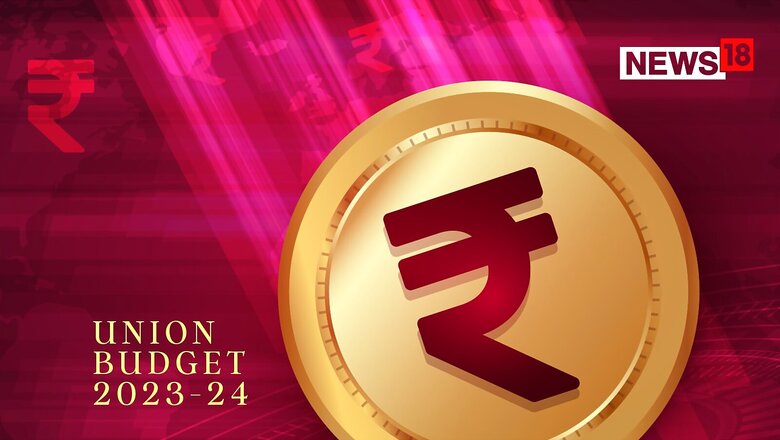
views
Union Budget 2023-2024: Finance Minister Nirmala Sitharaman will present her fifth straight Union Budget on Wednesday (February 1). Four-time presenter Sitharaman holds the record for delivering the longest speech when she spoke for two hours and 42 minutes while presenting the 2020-21 Union Budget on February 1, 2020.
Ex-finance minister Hirubhai Mulljibhai Patel had delivered the shortest speech of the Indian budget in 1977. Over the years, the tradition of presenting the budget has recorded a plethora of interesting and historical changes that have impacted the nation’s economy in the most significant fashion. With Union Minister Sitharaman gearing up to present the Budget 2023-2024, let’s take a quick look at some of India’s most iconic budgets.
First Budget of the Republic of India: Presented by John Mathai, the finance minister in the Congress government, this budget laid down the road map to the creation of the Planning Commission. The Planning Commission assesses all resources of the country and plans the most effective use of these resources. Jawaharlal Nehru was the first chairman of the Planning Commission.
Rollback Budget: The budget for 2002-2003 was presented by Yashwant Sinha during the NDA government reign. The budget for the Atal Bihari Vajpayee-led NDA government is known as Rollback Budget. Several proposals of the 2002-03 budget were either withdrawn or rolled back.
Millennium Budget: The Millennium Budget was presented by Yashwant Sinha in 2000. Sinha’s Millennium Budget presented the road map for the growth of India’s Information Technology (IT) industry. The Millennium Budget discontinued the practices of incentives on software exporters. The 2000 budget also reduced customs duty on computer and computer accessories.
Dream Budget: Using the Laffer Curve principle to lower tax rates in order to increase collections, P Chidambaram presented the budget that became ‘everyman’s budget dream’ in 1997-98. Reducing corporate tax rate and cutting down personal income tax rates from 40 per cent to 30 per cent, Chidambaram’s Dream Budget also encouraged higher investment from Foreign institutional investors (FIIs).
Epochal Budget: Manmohan Singh’s iconic budget in 1991 brought an end to the licence raj and it also kickstarted the era of economic liberalisation. Singh’s Epochal Budget was presented in the Parliament when India was on verge of suffering an economic collapse. Taking essential steps to promote exports, Singh’s landmark budget also reduced customs duty from 220 percent to 150 percent at the time.
Carrot & Stick Budget: The PV Narasimha Rao government ended the licence raj in 1991 and the initial steps to demolish the system were taken when VP Singh presented the Union budget in 1986. The union budget presented by Singh for the Congress government on February 28 is known as the Carrot and Stick’ budget. The rewards and punishment budget introduced MODVAT (Modified Value Added Tax). It also launched a drive against smugglers, black marketers, and tax evaders.
The Black Budget: Presented by Yashwantrao B Chavan under the Indira Gandhi government, the 1973-74 budget was called the Black Budget because the fiscal deficit during that year was INR 550 crore. The nation was embracing major financial distress at the time.
Pranab Mukherjee’s 2012 budget: Budget 2012-13 saw the government introduce the General Anti Avoidance Rules or GAAR. “I propose to introduce a General Anti Avoidance Rule (GAAR) in order to counter aggressive tax avoidance schemes, while ensuring that it is used only in appropriate cases, by enabling a review by a GAAR panel,” Mukherjee said in his budget speech.
Retrospective changes to the Income Tax Act that accompanied the budget created huge controversy in a move that allowed the government to pursue tax dues emerging out of the $11-billion Vodafone-Hutchison deal. GAAR was finally implemented in 2017. Vodafone and the Government of India continue to be locked in international arbitration.
Jaitley’s 2017 Budget of Many Firsts
Arun Jaitley’s 2017 budget presentation merged the Railway Budget with the General Budget, thus ending the 92-year-old tradition of having a separate Railway Budget.
A separate Railway Budget was started by the British in 1924. Even after the merger, the distinct entity and the functional autonomy of the Railways, as was envisioned, has been maintained.
This was the first budget after the Modi government took two crucial decisions: passing Goods and Services Tax and demonetisation. The budget tabled by former finance minister Arun Jaitley focused on the farm sector, healthcare and fiscal management. A sum of Rs10 lakh crore was allocated as credit to farmers. Moreover, the National Bank for Agriculture and Rural Development (NABARD) fund was increased to Rs 40,000 crore.
The key announcement in the budget was reduction in income tax from 10 per cent to 5 per cent for people earning between Rs 2.5 lakh and Rs 5 lakh.
Read all the Latest Business News here
















Comments
0 comment